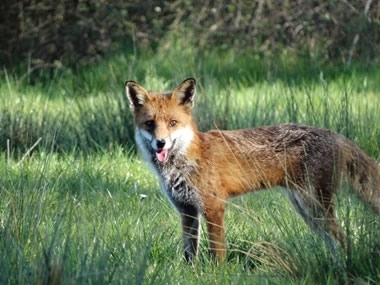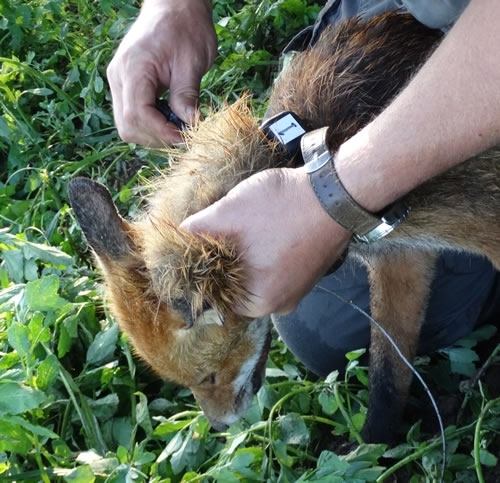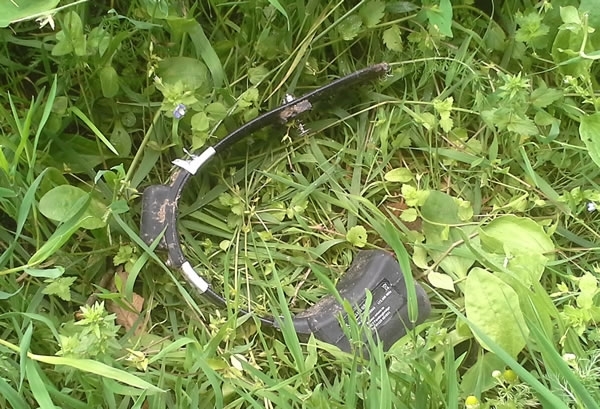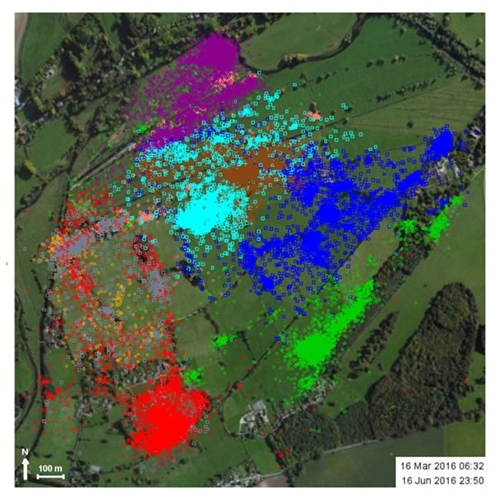By Mike Short, GWCT Senior Field Ecologist
It’s clear that poor nest and chick survival has driven the long-term decline of breeding waders in the Avon Valley. Foxes are an important predator of lapwing, redshank and other ground-nesting birds during the breeding season, but they’re difficult to manage, and we know little about their ecology in river valleys.
To effectively mitigate against the impact of foxes on waders, we need a clear understanding of how foxes live, not just in terms of their diet, habitat use and daily patterns of movement, but their population dynamics too. We have lots of questions.
What sort of fox densities are we dealing with? How productive are they? How quickly do foxes infill on sites where they’re culled? How ‘detectable’ are foxes that forage in the best wader breeding habitats, using conventional techniques such as lamping, high-seat counts, and field-sign surveys? Do lethal or non-lethal methods of predation control work best?
 Figure 1. Foxes are an important predator of waders during the nesting season
Figure 1. Foxes are an important predator of waders during the nesting season
Commonly used lethal fox control methods, such as night-shooting and the use of fox snares, are constrained by the very environment in which lapwings try and breed. The valley’s flat terrain, poor vehicular access, the presence of livestock and close proximity to residential areas, exacerbates rifle-shooting safety constraints; and tall reeds, rush-beds and meadow grass can mask the movement of foxes.
You can only shoot a fox if you can see it. Also, fox snaring opportunities around the best wader nesting habitats, are limited due to high-levels of non-target traffic, especially otters, and our research is pointing towards lapwing preferring to nest in fields grazed by cattle. Snares should never be set in fields that contain livestock.
 Figure 2. Landscape constraints make effective fox predation control challenging.
Figure 2. Landscape constraints make effective fox predation control challenging.
We want to know which methods works best.
Non-lethal control measures are really limited to physical exclusion, such as digging wide water-filled channels around nesting areas, and the use of nest protection baskets and electrified predator-proof fencing. Although such methods have met with varying degrees of success on some high-profile nature reserves managed specifically for waders, they won’t necessarily suit the purse-strings or management constraints of the many farmers who seek to earn a living in the Avon Valley.
Satellite-tracking devices have revolutionised what we know about the movements of woodcock, especially their migration patterns. Now we’re using similar technology to explore the lives of foxes. This year I’ve been catching foxes in snares and fitting them with GPS-trackers, on land where the habitat for waders is generally good, but where they no longer breed.
Between March and May, I caught and tagged 3 adult vixens and 6 adult dog foxes. If I’d had more collars available, I could have tagged several more! The ease with which I could catch these foxes, and their very active lives after release (see Figure 5) illustrate our long-held view that snares are not intrinsically injurious if used with care.
 Figure 3. GWCT scientists use snares to catch foxes and fit them with GPS-tags
Figure 3. GWCT scientists use snares to catch foxes and fit them with GPS-tags
The GPS-collars were a big investment – they’re around £2000 each – but they’re generating lots of fascinating new data. By logging into a web-portal, we can see where our tagged-foxes are, and where they’ve been, at any time. The life-span of a collar is determined by the number of GPS fixes it takes.
The more fixes you request, the shorter the battery life. We programmed our collars to provide a GPS fix every 10 minutes, or hour, depending on our research goals. That’s generating a huge volume of GPS location data – 34,319 useable points so far – and we now know a lot more about the activity and foraging patterns of foxes around wetland habitats.
The web-portal includes a battery-life indicator for each active collar. We need to retain enough juice in the battery to activate the collar’s remote drop-off device. Once the drop-off is activated, the collar slips off the fox and emits a radio-beacon. It’s then a case of criss-crossing the meadows with radio-tracking gear to retrieve the collar, and replenish its battery. Technology eh!
 Figure 4. The GPS-collars have a remote-drop off device, enabling us to recover them when the battery runs low.
Figure 4. The GPS-collars have a remote-drop off device, enabling us to recover them when the battery runs low.
It will be some months before we’ve analysed all of the data, but one thing is certain: these foxes are living at a very high density, not far short of what we see in urban environments. Although the 9 foxes that I tagged this spring were split between several adjacent family groups, all their activity took place within an area little more than 2 x 2 km. What’s more, camera traps and high-seat watches on the same area, showed there to be almost as many untagged adult foxes present.
As yet, we’re not clear as to why this population of foxes is so dense, or whether it’s typical of other areas in the valley. Other potential predators of lapwings in this area include weasels, stoats, mink, polecats, otters, badgers, hedgehogs, rats, ravens, carrion crows, magpies, jackdaws, jays, herons, gulls, red kites, buzzards, kestrels, peregrines and owls.
I’ve also watched domestic cats hunting along ditches on fields where lapwings are breeding. And what about grass snakes? There appear to be plenty of those in the valley too, and snakes are known to be enthusiastic predators of eggs and chicks. Although we don’t know which of these predators are most relevant, we can begin to appreciate the risks that lapwings face as they try to breed.
Like the much more abundant field voles, lapwing chicks are enthusiastically scoffed by most predators. On some sites, sub-optimal breeding habitat exacerbates their impact, especially during prolonged periods of bad weather.
 Figure 5. Our GPS-tagging research shows that foxes are living at very high densities in the Avon Valley. The coloured dots indicate repeated locations of nine different adult foxes on our study site during March to June. Locations of some individuals are partially masked by the sheer density of overlaid data. There were a similar number of untagged adult foxes occupying the same area . Contains Bing imagery © Microsoft Corporation 2016.
Figure 5. Our GPS-tagging research shows that foxes are living at very high densities in the Avon Valley. The coloured dots indicate repeated locations of nine different adult foxes on our study site during March to June. Locations of some individuals are partially masked by the sheer density of overlaid data. There were a similar number of untagged adult foxes occupying the same area . Contains Bing imagery © Microsoft Corporation 2016.
As we recover the last few collars from our study animals, we’re faced with a lot of number-crunching, and we’re already discussing next year’s fieldwork season. One more challenging option is to catch and tag foxes on sites in the Avon Valley where predators are currently controlled but where waders are struggling to breed well.
As we unravel their lives and daily activity patterns, and figure out the most reliable way of detecting foxes, we’ll be much better placed to provide researched-based advice on their effective management in the Avon Valley and elsewhere.
Please support our Waders For Real Project